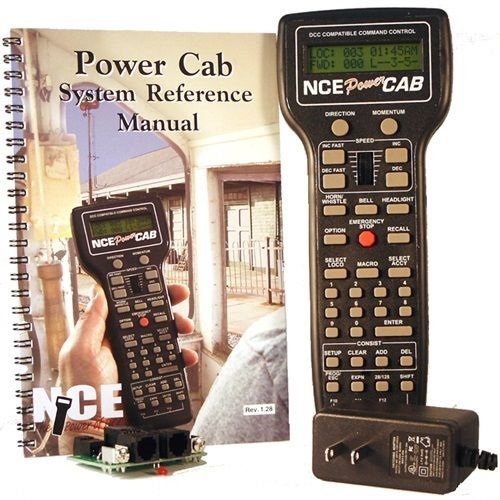Beginner's Guide to Model Railroading
What Is Digital Command Control?

A DCC decoder is a device that “listens” to information transmitted through the track. Each locomotive has a different decoder. This allows you to run two or more locomotives on the same track at different speeds and in different directions. Trains with DCC capability cost more, but that’s because they can be operated individually, like real trains.
A DCC Starter Set, like the one shown above, is an entire DCC system in the palm of your hand! This system can operate up to 4 HO-scale locomotives or 8 N-scale locomotives. Installation is simple: just hook two wires to your track and plug in separate names or designations for your locomotives into the power cab (control unit), like 2-8-0 or 2-6-4, or Mikado or Santa Fe.
The DCC system shown comes with a power cab, 7' power cable, PCP power panel, power supply, pro cab coiled cord, and an operating manual.
Continue with this Railroading Workshop by clicking on the link below:
What Is the Bachmann E-Z App Touch Screen Control?